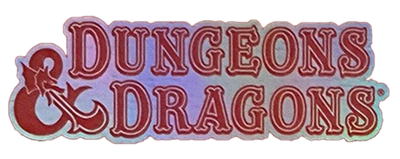Introduction
Welcome; this is a sourcebook expanding psionics in your games. Within these pages you will find a host of new options for psionic characters, including feats, prestige classes, and powers. Characters belonging to a psionic race will also find some special options relating to the unique strengths and characteristics of their race. GMs, as well, should find material up their alley, ranging from psionic organizations and NPCs to a host of vicious monsters, including one group of monsters able to serve as an entire campaign focus.
Using This Book
This sourcebook expands on Open Game Content presented in the psionics section of the SRD. Supplemental information may be found online at this book’s website. Additional material, such as web enhancements, will be collected on this site.
Other Works
This sourcebook contains references to Open Game Content that appeared originally in other works. These other works are not required to enjoy this sourcebook, but your play experience may be enhanced by using these other sources. Except for a single feat, this sourcebook does not reprint material from other sources.
Many monsters (particularly those of the Nameless Fear) have the dreamborn subtype, which appears in other sources and belongs to creatures comprised, at least partially, of the stuff of dreams. If you do not have access to these other sources, treat a creature with the dreamborn subtype as having a 20% miss chance against all attacks (physical or not), due to the creature’s hazy, out-of-focus appearance. This isn’t an incorporeal miss chance or concealment, so ghost touch weapons or concealment-reducing effects do not ignore this miss chance, but other effects that ignore miss chances altogether (such as an augmented "the arrow knows the way" power or any area-effect spell or power) can affect a dreamborn creature normally.
The psionic classes introduced in this sourcebook with unique power lists (the marksman, society mind, and sighted seeker) have powers from other sources presented on their power lists. If you are not using these other sources, these powers simply are not available. Powers from these other sources deliberately make up a very small amount of each new class’ power lists. None of these powers make use of the campaign-changing elements of the other sources, however, so if you have access to these other souces and are not using it for that reason, these powers may remain available at the GM’s option.
Discipline vs. Devotion
Since the release of the current edition of psionics, new players are often confused with the term “discipline.” This is because it actually refers to two very different things at the same time – one refers to the “school” of a psionic power (psychometabolism, metacreativity, and so on), and the other to one of the six types of psions and their special lists of powers (egoist, shaper, and so forth).
In order to reduce confusion, this sourcebook uses the term “discipline” only in the first case – the term “devotion” is introduced to represent the psion subtype and unique list. An example of use would be “Many powers in the shaper devotion list come from the metacreativity discipline.”
This does not carry with it any mechanical change. It affects only names, and is for the sake of clarity. The only retroactive change is renaming the first-level psion class feature to “devotion”.
Rules Replacements
By and large, this sourcebook does not replace any rules in your games, it merely provides new ones. However, it does present an alternate to the often-confusing shapechanging rules. More details on this alternate system, plus the exact list of material it replaces from the Expanded Psionics Handbook, may be found in chapter 7, with additional information in chapters 4 and 5. If you enjoy this version of shapechanging, it is designed to be relatively straightforward to port to the existing d20 magic system as well.
Template:3.5e Untapped Potential Breadcrumb

